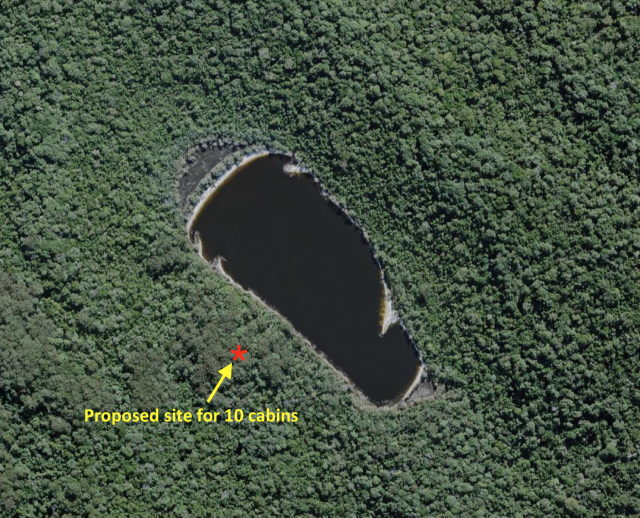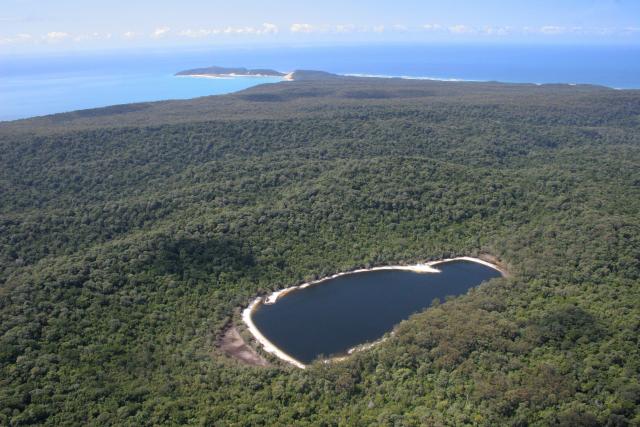Keith Scott is an 85-year-old scientist and conservationist who is adamantly opposed to the Queensland Government’s proposal to establish five privately-owned ‘eco accommodation’ huts along the Cooloola Great Walk in the Great Sandy National Park.
Keith said this area became a national park due to the devotion of conservationists and whose vision of Cooloola being permanently set aside for the protection of nature could be destroyed for private profit.
He said the Australian Rainforest Conservations Society (ARCS) has previously expressed concerns about private development in national parks.
He said the Newman LNP government in 2013 amended the Nature Conservation Act 1992, firstly to broaden the object of the act from simply protecting nature to providing recreation and eco-tourism facilities and then to provide for leasing land within national parks to eco-tourism operators to provide accommodation for paying guests.
“The Queensland Ecotourism Trails program was initiated by the Department of Tourism, Innovation and Sport in 2018 when they called for expressions of interest from private investors in providing ecotourism experiences, including ‘low-impact structures’ at three sites, the Thorsborne Trail on Hinchinbrook Island, the Whitsunday Island Trail, and the Cooloola Great Walk.
“The processes for the Thorsborne Trail and Whitsunday Island Trail have been abandoned as they did not meet the expectations of the community and traditional owners.
He said the Cooloola Great Walk Ecotourism Project is proceeding, apparently with strong support from the government, with the preferred proponent, CABN.
Of the five proposed eco-accommodation camps proposed by CABN, he said two are of particular concern; one is at Lake Poona and the other alongside the Noosa River.
“Lake Poona is the only perched lake on sand on the Australian mainland.“
“It is surrounded by rainforest including areas of a Threatened Ecological Community listed under the Environment Protection and Biodiversity Conservation Act 1999.“
He said the proposed development would construct ten cabins in the forest just one hundred metres from the lake on the hillside overlooking Lake Poona.
“This would fundamentally destroy what is now an essentially pristine environment, a true wilderness.”
Rainbow Beach locals feel all five chosen locations are important particularly the proposed site at Double Island Point with permit holders shocked at the hypocrisy of banning flights over the island to ‘protect the national park’ and not relinquishing tourism permits to trade between Rainbow Beach and Teewah Beach yet supporting the notion of cabins in the very same area.
Cooloola is a sand mass essentially equivalent to Fraser Island, Bribie Island, Moreton Island and North and South Stradbroke Islands, but it adjoins the mainland.
“Cooloola National Park was finally declared in 1975 but it excluded the central core which remained as State Forest.”
“It also excluded the western catchment but that was added later because of the continued efforts of Arthur Harrold and Bill Huxley.”
“The national park on the Cooloola sand mass was not an initiative of government.
He said it did not become national park because the government recognised its conservation values but rather as a result of the devotion of conservationists, Arthur Harrold, Bill and Mavis Huxley, Kathleen McArthur, Judith Wright, and many others.
“It is greatly distressing that their vision of Cooloola permanently set aside for the protection of nature could be destroyed for private profit, accommodation for a wealthy few and a little government revenue”
“Greg Wood, with whom we worked in the lead up to the SEQ Forests Agreement, is co-ordinating a campaign to try to stop the development.
“A web site has been set up where you can download postcards to email government ministers and there is a petition on change.org.”
He has asked anyone who is interested to saving this remarkable piece of unspoilt rainforest, to please visit the website, www.protectparks.net, send an email to ministers and sign the petition.








